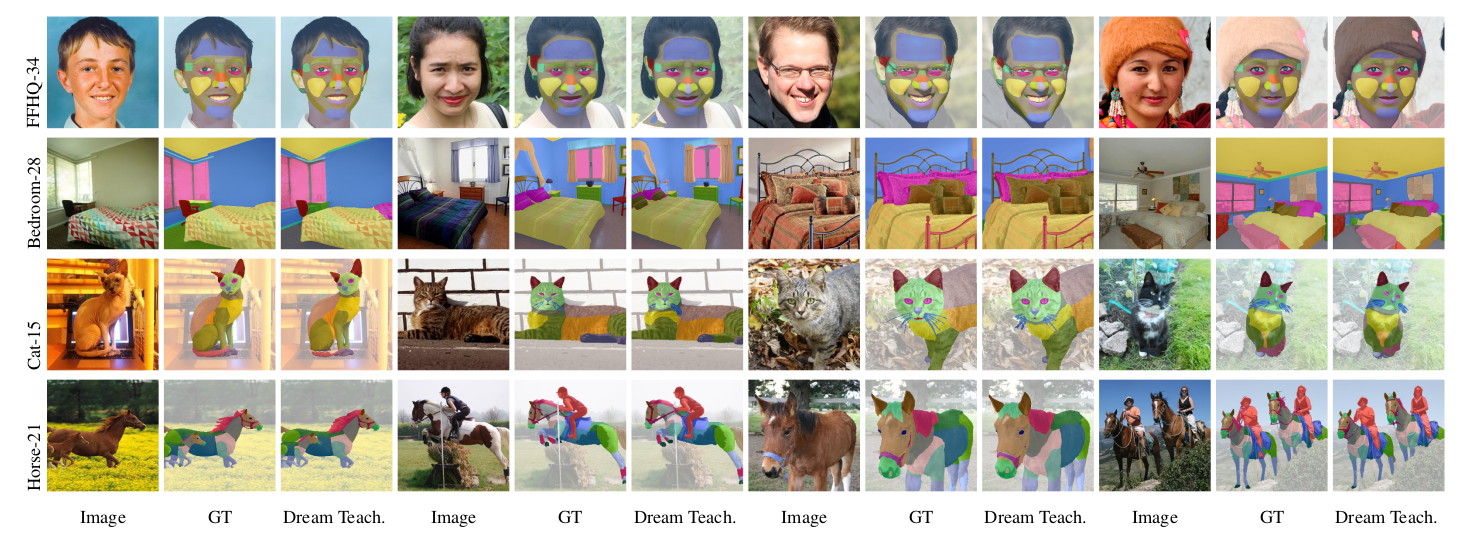|
|
|
|
|
|
|
|
|
|
|
|
|
|
|
|
|
ICCV 2023

|
|||
|
|
|||
|
|
|||

|
|||
|
|
|||
In this work, we introduce a self-supervised feature representation learning framework DreamTeacher that utilizes generative networks for pre-training downstream image backbones. We propose to distill knowledge from a trained generative model into standard image backbones that have been well engineered for specific perception tasks. We investigate two types of knowledge distillation: 1) distilling learned generative features onto target image backbones as an alternative to pretraining these backbones on large labeled datasets such as ImageNet, and 2) distilling labels obtained from generative networks with task heads onto logits of target backbones. We perform extensive analysis on several generative models, dense prediction benchmarks, and several pre-training regimes. We empirically find that our DreamTeacher significantly outperforms existing self-supervised representation learning approaches across the board. Unsupervised ImageNet pre-training with DreamTeacher leads to significant improvements over ImageNet classification pre-training on downstream datasets, showcasing generative models, and diffusion generative models specifically, as a promising approach to representation learning on large, diverse datasets without requiring manual annotation.
 |
DreamTeacher: Pretraining Image Backbones with Deep Generative Models Daiqing Li*, Huan Ling*, Amlan Kar, David Acuna, Seung Wook Kim, Karsten Kreis, Antonio Torralba, Sanja Fidler For feedback and questions please reach out to Huan Ling and Sanja Fidler. |
|||

|
|
DreamTeacher architecture: Feature regression module (FR) maps and fuses multi-scale features of a (CNN) image backbone. We supervise FR with features from the generator's decoding network. We optionally add a feature interpreter to the generator to train a task head with supervised labels-used to supervise the image backbone with label distillation loss. |
If you find this work useful for your research, please consider citing it as:
@misc{li2023dreamteacher,
title={DreamTeacher: Pretraining Image Backbones with Deep Generative Models},
author={Daiqing Li and Huan Ling and Amlan Kar and David Acuna and Seung Wook Kim
and Karsten Kreis and Antonio Torralba and Sanja Fidler},
year={2023},
eprint={2307.07487},
archivePrefix={arXiv},
primaryClass={cs.CV}
}